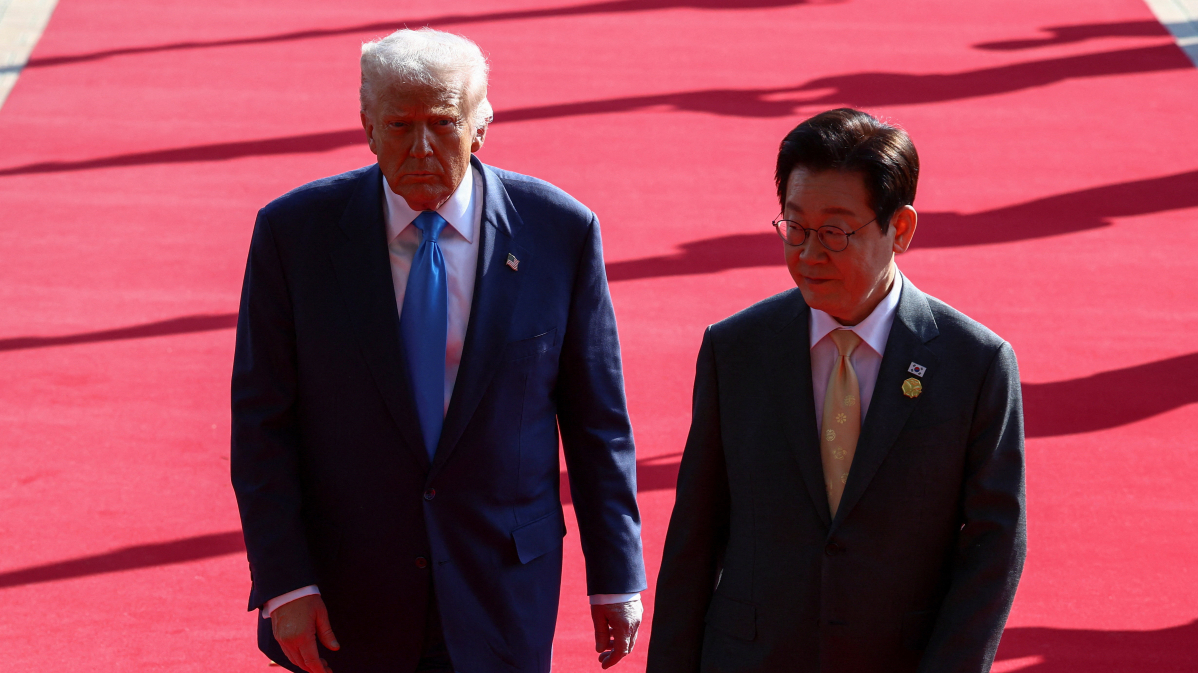U.S. widens travel ban to more than 30 countries, Noem says
The United States plans to extend its travel ban to over 30 countries, U.S. Homeland Security Secretary Kristi Noem announced on Thursday....

The U.S. and South Korea revealed the details of a significant trade agreement on Friday, which includes a $150 billion investment from South Korea in the American shipbuilding sector and an additional $200 billion to be allocated across various industrial sectors.
On Friday (14 November), South Korea's Industry Minister Kim Jung-kwan and U.S. Commerce Secretary Howard Lutnick signed a 27-point memorandum of understanding (MOU) outlining strategic investments.
This non-binding document lays out a schedule for project implementation, with decisions made in consultation with the U.S. president, and Seoul is required to transfer funds within 45 days.
Washington also agreed to South Korea's request that $200 billion in cash investments be paid in installments no larger than $20 billion per year to help maintain the stability of the won. The two countries also agreed that South Korea's investments should not "give rise to market instability."
If signs of instability emerge, South Korea can request an "adjustment in the amount and timing of the funding," with the U.S. pledging to "give due consideration" to such a request in good faith.
Under the agreement, South Korea will form a new partnership with the U.S. on shipbuilding, artificial intelligence (AI), and nuclear industries, echoing the U.S.’s past support for South Korea.
A fact sheet from the White House confirmed that the U.S. approved South Korea’s development of nuclear-powered submarines and will collaborate with Seoul on sourcing fuel for these projects.
"Finally, the South Korea-U.S. trade, commerce, and security negotiations, which were among the biggest variables affecting our economy and security, are concluded," said South Korean President Lee Jae Myung, highlighting the significance of the deal.
"Good competition requires excellent partners, and I believe President Trump's rational decision played a significant role in achieving this meaningful agreement," he added.
The agreement with Washington marks progress on key security and energy issues, including the construction of nuclear-powered submarines and expanding South Korea's nuclear energy capabilities.
Lee’s national security adviser said the two countries had discussed the submarines with the understanding that they would be built in South Korea.
While Trump previously suggested the submarines would be constructed in a Korean-owned shipyard in Philadelphia, the deal confirmed the vessels would be made in South Korea.
The agreement also includes U.S. cooperation on enabling South Korea to enrich uranium and reprocess spent nuclear fuel.
Trump's tariffs
The agreement followed a meeting at the end of October between South Korean President Lee Jae Myung and U.S. President Donald Trump, where they also agreed to lower U.S. import duties on South Korean products from 25% to 15%.
Semiconductors will be subject to tariff terms similar to those for Taiwan, according to a presidential adviser.
Lee, who took office five months ago, sought to turn the threat of the tax hikes into an opportunity to boost South Korea's trade and security status.
Friday's deal ends over three months of contentious negotiations over Trump’s tariffs, which had particularly concerned South Korea, particularly the heavy duties on key exports such as semiconductors and automobiles.
However, analysts caution that it's too early to determine whether South Korea received a better deal than Europe and Japan.
Kim Dong-yup, a former Navy officer now at Kyungnam University, noted that while the deal boosts South Korea’s defense capabilities, it also means the country will have to pay much more for defence. Nevertheless, Lee faced "an inevitable choice."
A trade deal in principle was first unveiled in July.
For nearly three decades following the dissolution of the Soviet Union, the international system was defined by a singular, overwhelming reality: American unipolarity.
Chinese scientists have unveiled a new gene-editing therapy that they say could lead to a functional cure for HIV, making it one of the most promising developments in decades of global research.
Faced with mounting public outrage following one of the deadliest environmental disasters in the nation’s recent history, the Indonesian government has pledged to investigate and potentially shut down mining operations found to have contributed to the catastrophic flooding on Sumatra.
Britain’s King Charles III welcomed German President Frank-Walter Steinmeier on Wednesday, marking the beginning of his three-day state visit to the United Kingdom. The visit, the first by a German President to the UK in 27 years, comes as the two countries continue to strengthen ties post-Brexit.
Israel was cleared on Thursday to participate in the 2026 Eurovision Song Contest, a decision made by the organisers, the European Broadcasting Union (EBU), which sparked a major controversy.
The United States plans to extend its travel ban to over 30 countries, U.S. Homeland Security Secretary Kristi Noem announced on Thursday.
Chinese President Xi Jinping accompanied French President Emmanuel Macron to Chengdu on Friday, a rare gesture seemingly reserved for the leader of Europe’s second-largest economy, highlighting Beijing’s strategic focus on Paris in its dealings with the European Union.
U.S. President Donald Trump brought together the leaders of the Democratic Republic of Congo and Rwanda in Washington on Thursday to sign a peace deal, despite ongoing fighting in the region.
Russian President Vladimir Putin will hold summit talks with Prime Minister Narendra Modi in New Delhi on Friday, aiming to enhance trade with Russia’s leading buyer of arms and seaborne oil, as Western sanctions continue to pressure their long-standing relationship.
President Donald Trump has appointed a new architect to oversee the highly anticipated White House ballroom project, a White House spokesman confirmed on Thursday.
You can download the AnewZ application from Play Store and the App Store.

What is your opinion on this topic?
Leave the first comment